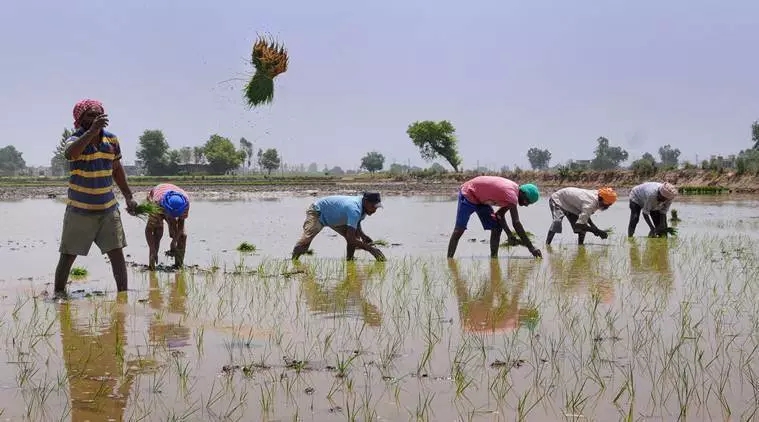
PANAJI
Erratic weather patterns in Goa are hitting the state’s agriculture sector hard, with yields of seasonal crops like cashew, mango reporting decline. Unseasonal heavy rains, uneven monsoon distribution, and intense heat-wave like conditions over the past two-three years have combined to damage paddy fields, vegetable farms, etc.
The climate change, every passing year, has led to a drop in cashew yield by almost 50 per cent and another 30-40 per cent drop in mango - the two essential summer crops. This is for the second consecutive year that Goa saw a drop in these two major fruit crops. The farmers fear that with the worsening climatic conditions, the fertility of both these crops may be impacted permanently.
According to a recent study by the Reserve Bank of India (RBI), India’s agriculture sector is increasingly vulnerable to the rising frequency and intensity of extreme weather events and that the climate change will remain a persistent threat.
As per IMD, the coastal State emerged as one of the most heat-affected places in the country this summer. In May, the ‘feels like’ temperature was 47.8°C – probably the highest among several IMD stations experiencing high heat levels.
While rainfall has been a common phenomenon experienced throughout the year, the southwest monsoon set its arrival date in Goa, almost 12 days before its usual onset date. This year, onset of the monsoon was on May 25, as against June 5. This was the earliest since 2006.
Agriculture Department officials say the unpredictable rainfall has led to waterlogging in low-lying fields while also causing drought-like conditions in several other agricultural areas. Meanwhile, the spells of extreme heat have scorched tender crops, affecting germination and fruiting.
According to the Agriculture department and the Goa Forest Development Corporation, the cashew assessment till May, reported over 50 per cent drop in the crop yield. The assessment is ongoing and the exact decline will be known by next week.
“The assessment is ongoing but till May, the decline is nearly 50 per cent. Last year too, we had reported a drop in cashew production by 50 per cent. This year, the mango yield is down by 30 per cent as against 40 per cent last year. The irregular weather and extreme differences between day and night temperatures are also responsible for uneven flowering in mango crops,” a official in the agriculture department said, appealing farmers to adopt climate-resilient cropping patterns, rainwater harvesting, etc.
Official explained that for the last two-three years, Goa is experiencing erratic weather patterns, including unseasonal rainfall and extreme temperatures that are significantly impacting agriculture. He said that the vegetable growers have complained of fungal diseases and rooting due to excess moisture.
Shivram Bandekar, a farmer from Gudi-Quepem, said “Our cost has increased but yields are down. The income has fallen drastically. We don’t know how we will recover it”.
He said that in his area, the mango yield is down by almost 50-40 per cent in the last two years. “Due to unseasonal rains, the harvesting of the paddy was also affected,” Bandekar explained.
“Some areas got too much rain at once while others remained dry. Then the sudden heat wave burnt the seedlings,” said Rajan Naik, a farmer from Ponda, explained.
The farmers are demanding government support for transitioning to adaptive practices to cope with the changing weather patterns. “The government will have to help us with climate-resilient measures. We are ready to adopt it,” Naik said.
The RBI report has analysed the impact of spatial variation in rainfall across districts on kharif crop production, highlighting how deficient or excessive rainfall during specific periods can severely affect the yield and quality of certain crops. Extreme weather events, such as unusually high or low rainfall, often lead to significant crop damage, disrupting production and reducing yields. The timing of these events plays a critical role, as crop production cycles vary.